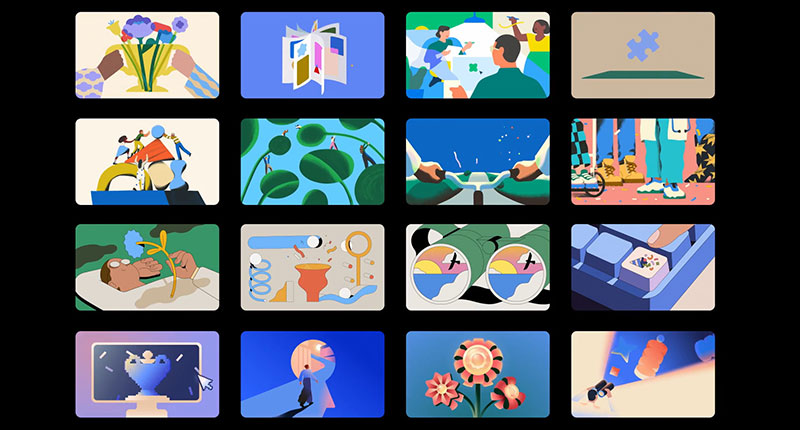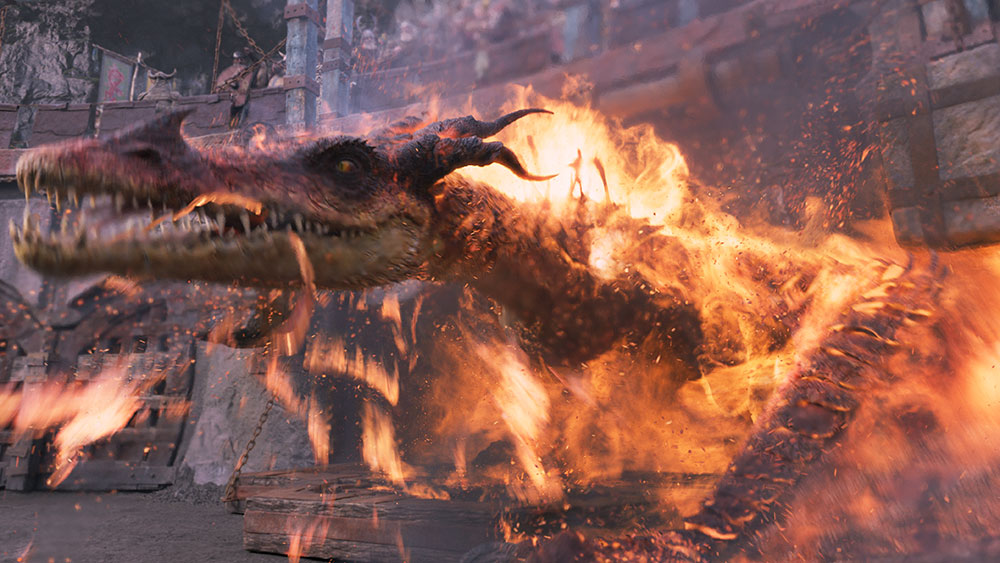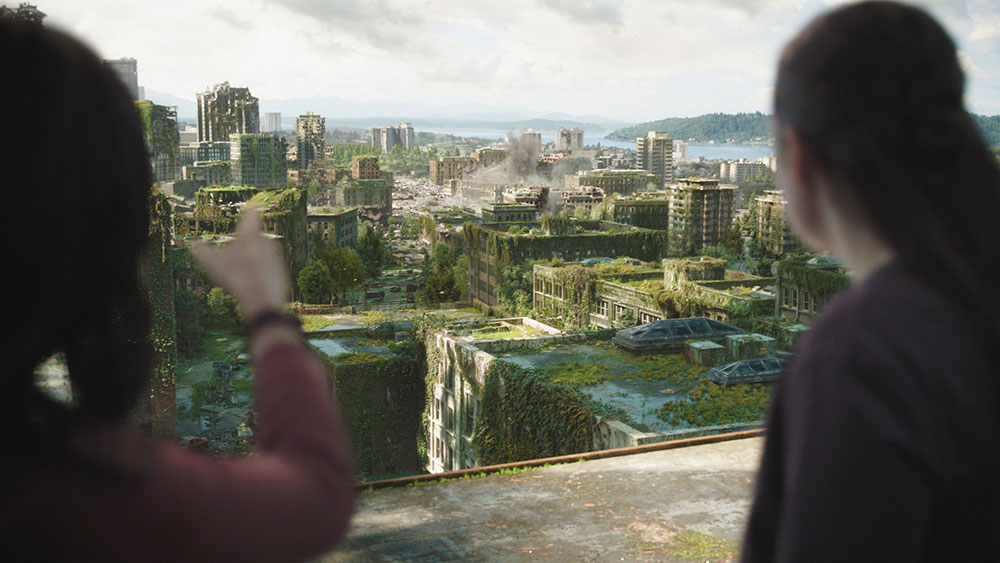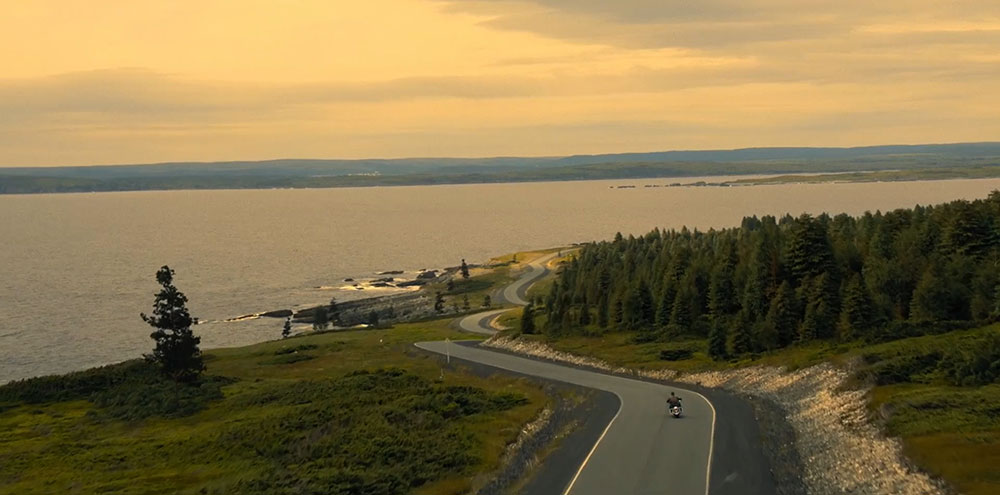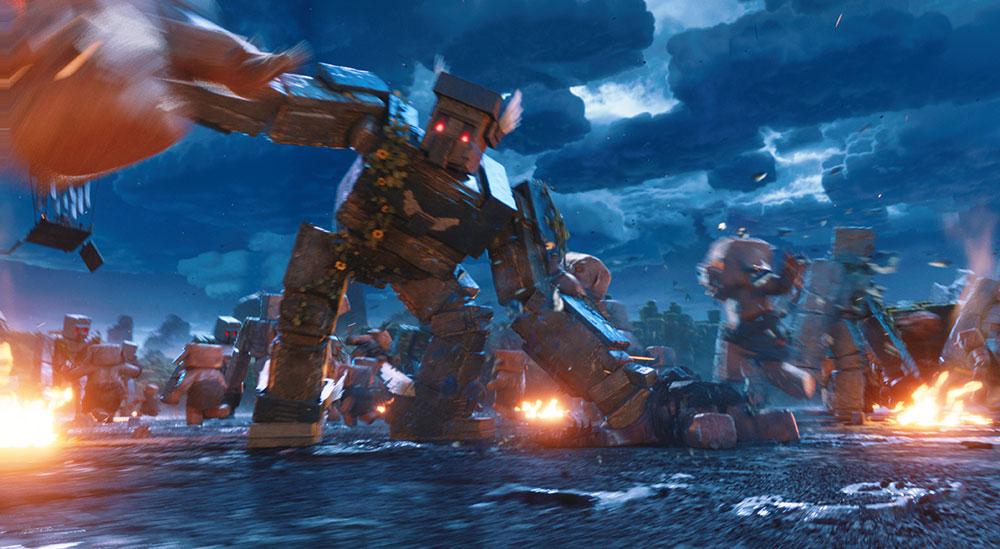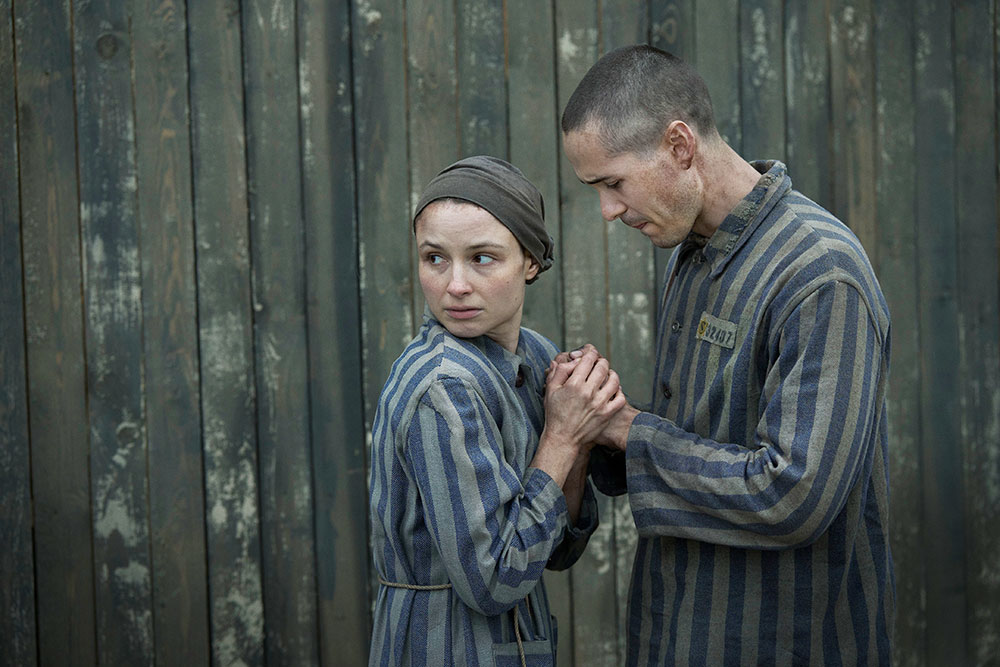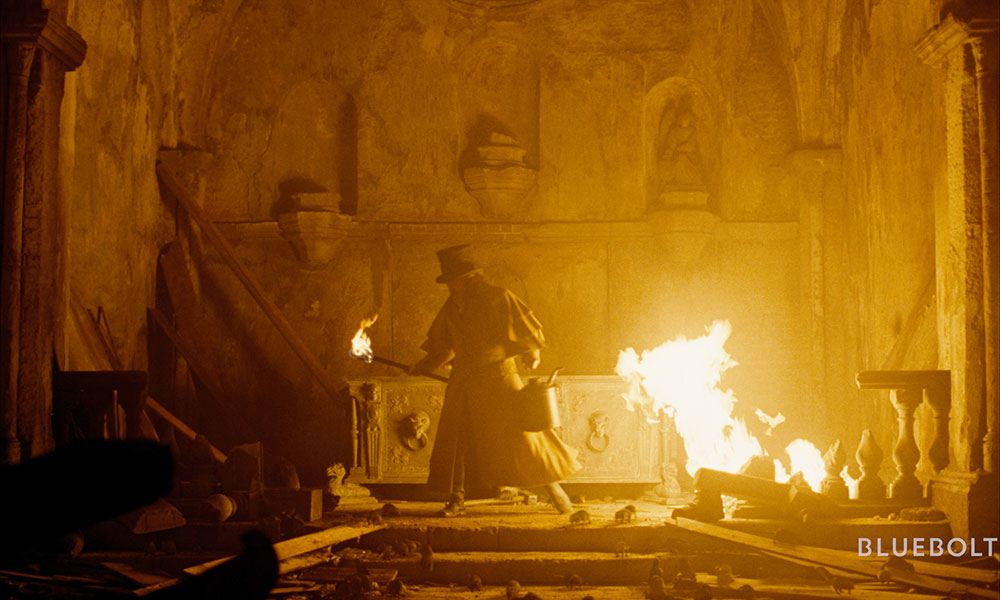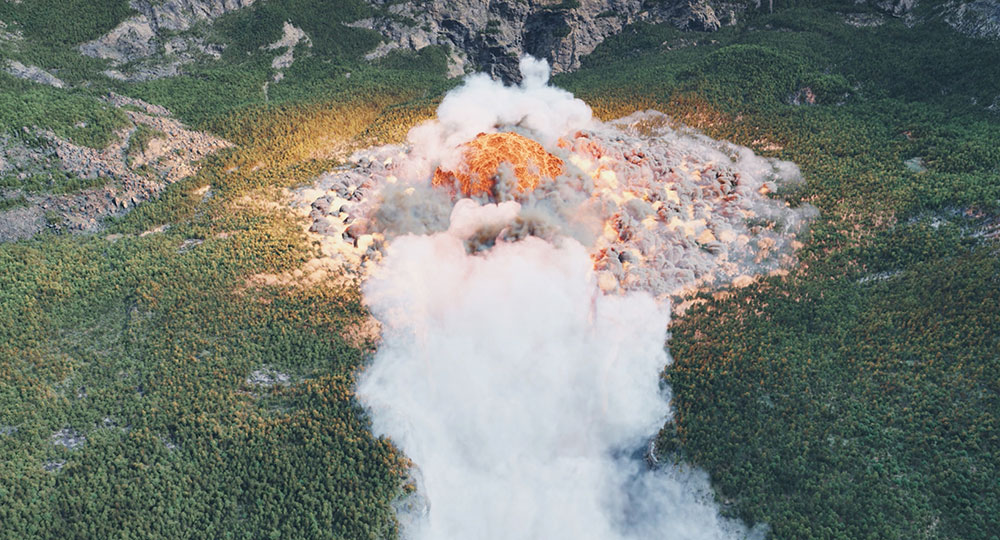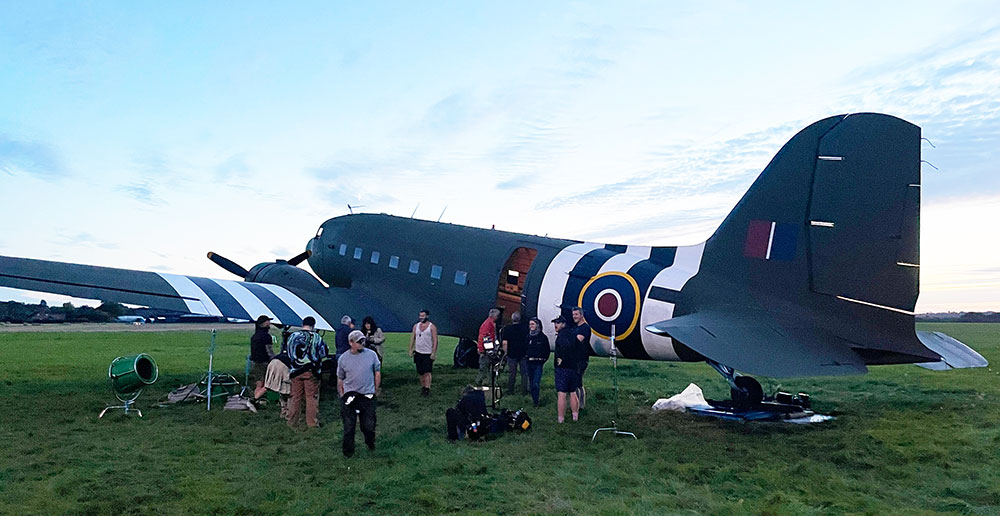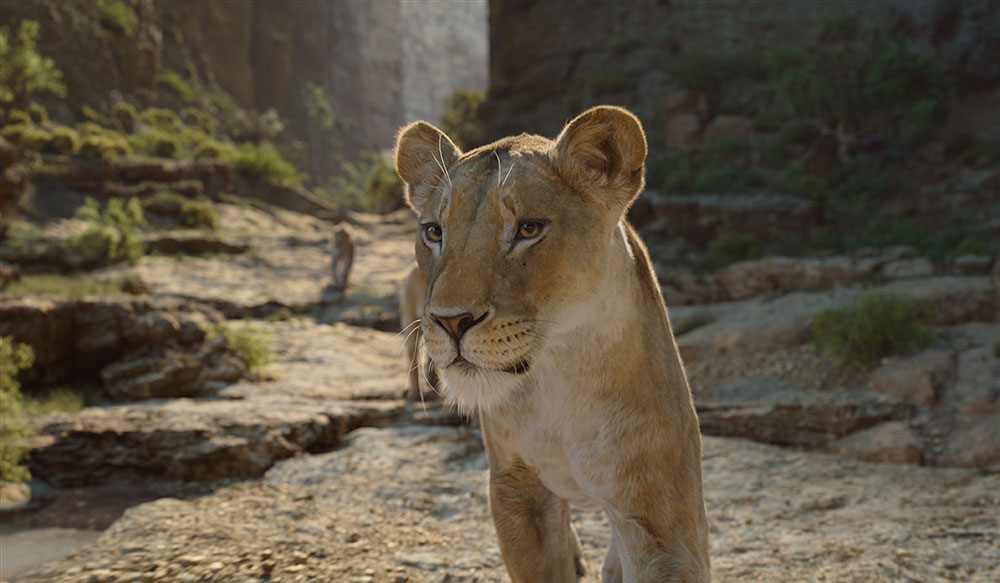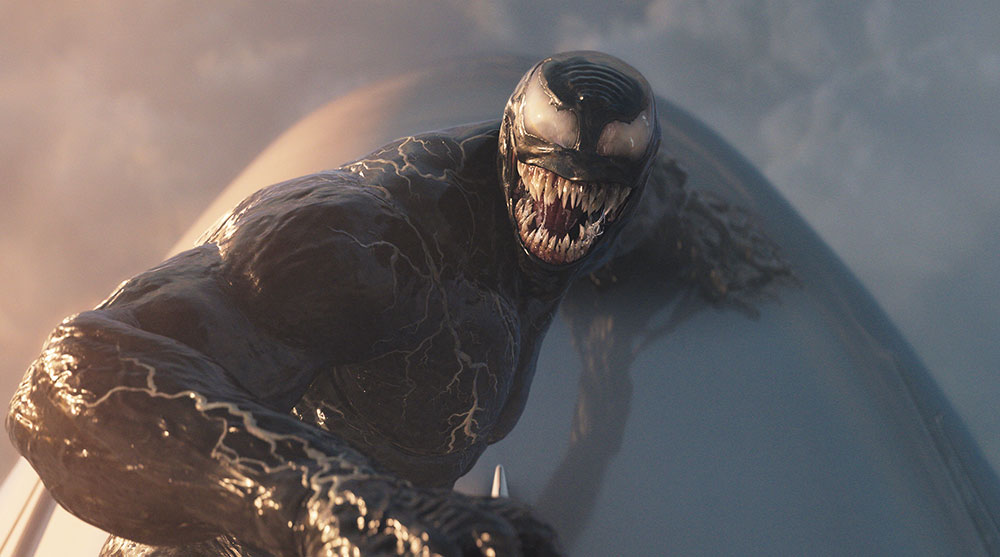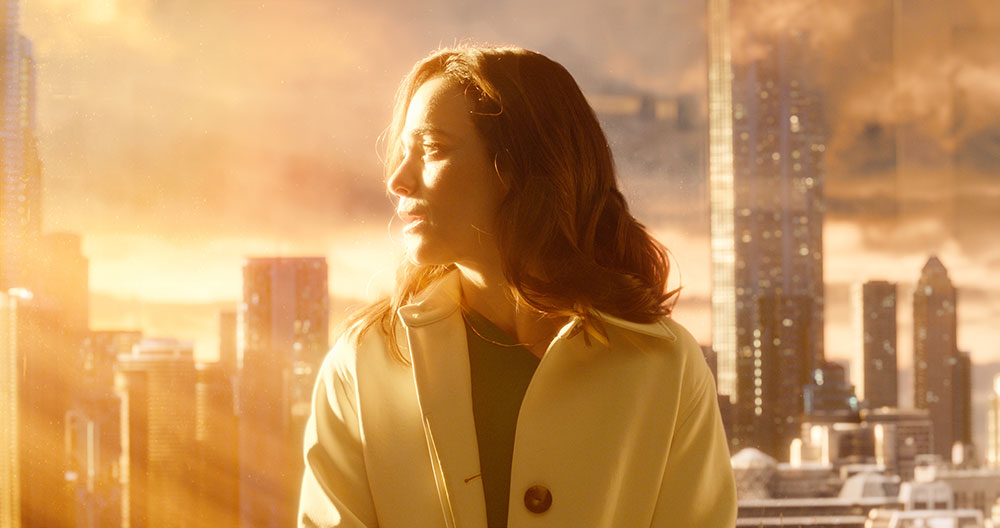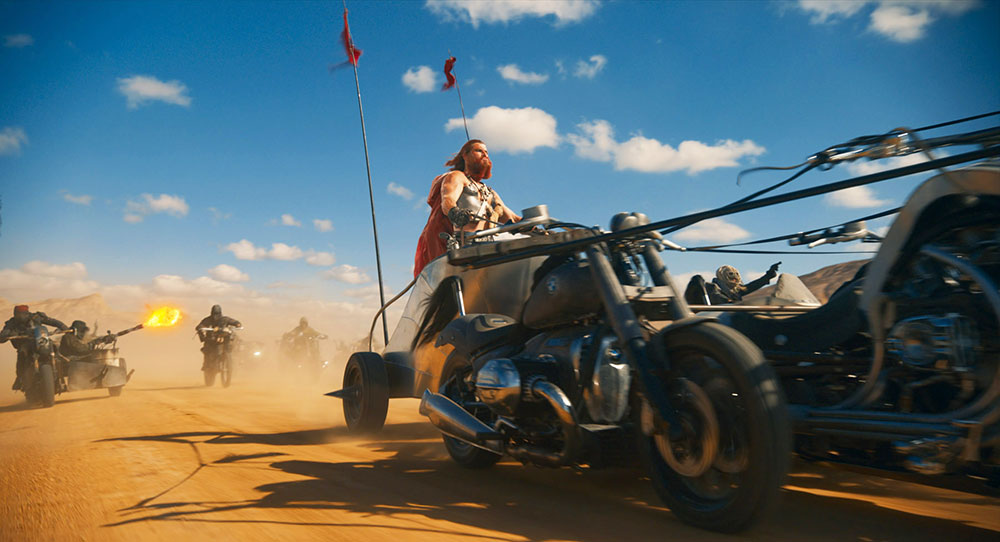Matt McClurg talks about creating previs for the series, helping Digital Domain’s team return to traditional 2D techniques to keep an authentic, old school look and feel across the magical VFX
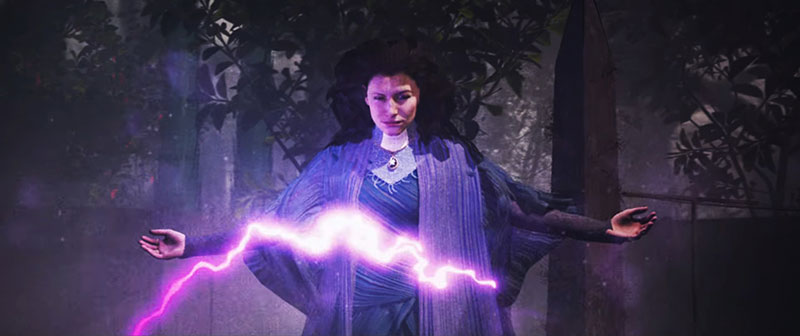
Visual effects studio Digital Domain took a major role in building out the world of one of the Marvel Cinematic Universe’s favourite witches, Agatha Harkness, and her coven in the Disney+ and Marvel Television series ‘Agatha All Along’, and also served as primary previs vendor. Digital Domain’s Head of Visualization Matt McClurg and his team delivered approximately 740 shots across 16 sequences for the series.
Viewers rediscover the witch Agatha Harkness, without her magical powers, three years after she was trapped under a spell in the town of Westview, New Jersey, at the end of the earlier series WandaVision. Agatha escapes with the help of a mysterious young companion, who also wants to face the trials of the legendary Witches' Road. The two of them form a new coven of witches to help face the trials, while confronting some of Agatha's old enemies.
Limiting the Guesswork
Matt McClurg’s team joined the project after the look development phase. “The art department had been in full swing for quite some time and that helped us streamline the asset building considerably. Because we hadn’t been able to visit the sets, we would often receive an art department model for various environments. Typically we put those models through a rigorous clean-up process to make them usable in our general workflow. In the case of the critical Witch’s Road set, we were lucky enough to have a scan of the area.
“We were also fortunate to receive director-approved storyboards, which limits the guesswork and helped us determine the camera angles quite accurately. Once our camera is in the scene and we get the general composition to match the proposed artwork, then we can make any adjustments required to better sell the shot.”
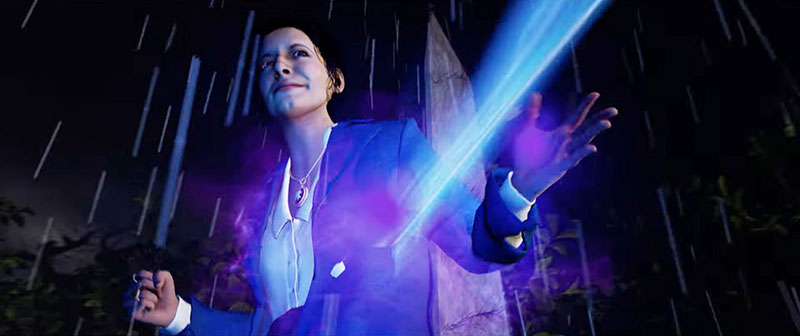
The team delivered fully edited animated sequences, complete with sound, and an Avid bin to allow the production-side editorial to refine the cut as needed. They create their work with a full range of 3D software from Maya, Blender, Houdini and Nuke, to the Adobe Suite, Avid, a little Unreal engine and a myriad of other proprietary software and tools.
Old School Looks for New Magic
For this show, production gave an artistic directive that aimed to maintain an authentic ‘old school’ quality for the visual effects. For Digital Domain’s artists, that meant embracing an approach based on traditional 2D compositing techniques, which in turn called for a fairly limited toolset and posed some interesting artistic and technical challenges.
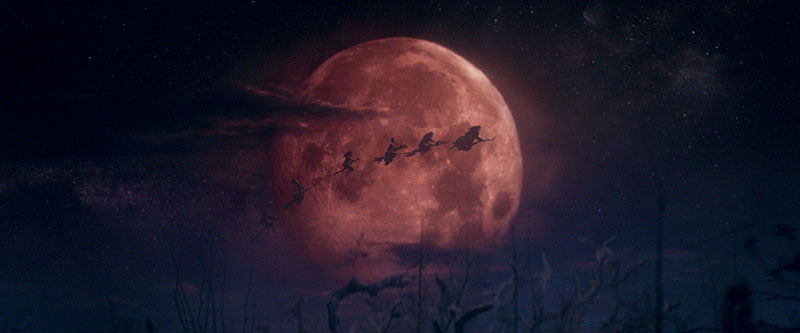
Composite
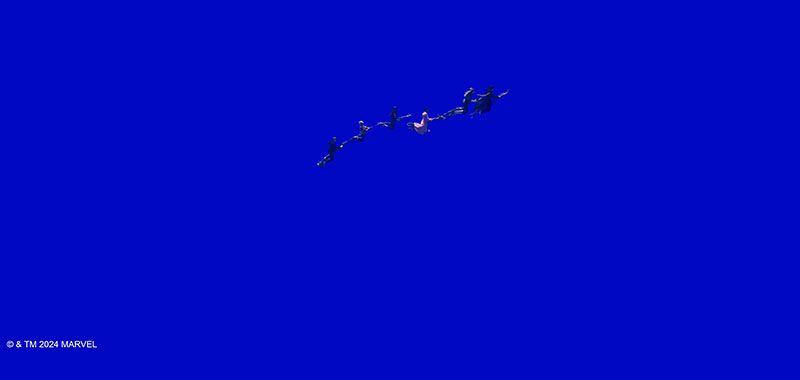
Bluescreen plate
For example, each beam of magic from each of the witches required a specific origin and destination. In order to keep the effect grounded in the 2D world and still be able to make variations and quick iterations, the compositing team devised a solution that involved augmenting the beams generated in Nuke with Tesla coil footage and other practical elements, and even hand-animating bits of energy.
Another example is the coven’s attempt to escape the Witch’s Road, when the witches fly high above the treetops across a blood moon. This scene initially began as a traditional painted backdrop on glass, similar to the early matte paintings employed on film sets. Using this painting as a base, the VFX team fleshed it out with details such as stars and galaxies. Individual puppets dressed as each character were then photographed on miniature brooms against a blue screen on set.
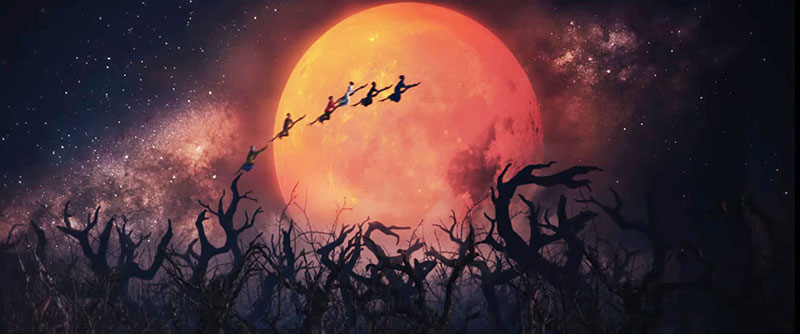
Previs
Down the Witch’s Road
This practically based, 2D approach had an especially strong effect on that key story setting of the infamous Witch’s Road – where the witches encounter and face all of their trials – and the broom chase sequence that takes place there. “The production actually built the Road as an incredibly elaborate set piece, fully set-dressed, that took up one of the largest stages they could find,” Matt said.
“Once our previs team had a rough Lidar scan of that space, we were able to block in varying broom paths for the characters with a huge variety of different gags and approaches to the narrative structure. However, about halfway through this process, the decision was made to shoot the sequence as practically as possible.
“That meant that this elaborate set was now taking over most of the CG-centric action to become an exercise in 1980s film making. It was both extremely challenging and rewarding. Suddenly, the previs we were doing became comprehensive techvis where every shot composed had to be produced practically on set with all necessary wire clearance, which was made more difficult due to the trees.”
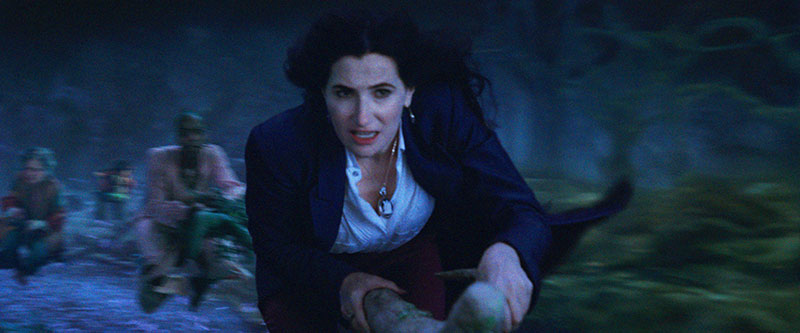
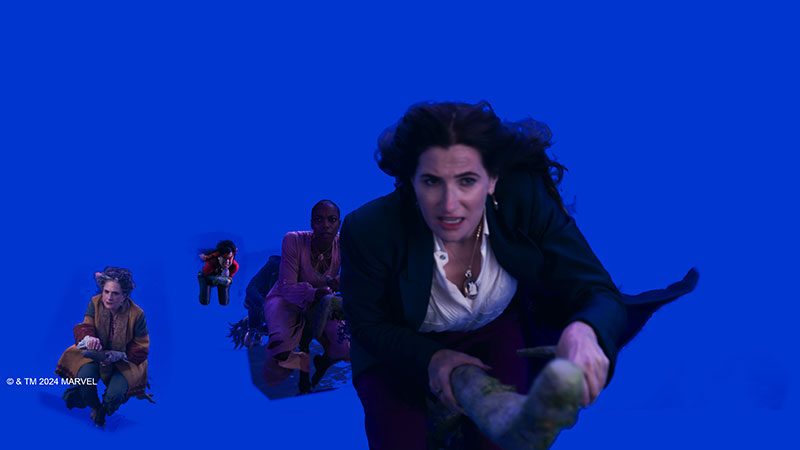
Building Backgrounds
Starting with the environment, on-set production used drones to capture 180-degree array footage that, when stitched together, served as backgrounds to insert the witches on broomsticks into. Each one was shot individually on blue screen, suspended on a harness.
Once the compositors extracted each character from the blue screen, the animation team then ‘flew’ these elements through a digitally created forest environment that matched the practical set. This approach helped ensure they were all travelling correctly in 3D space, preserve their scale and position, and maintain a realistic appearance.
Back in compositing, this flight information from animation was used to reproject each witch onto animated geometry, rephotographing them with the camera lens that matched the selected array background. The lighting team rendered full 3D versions of the forest assets that extended specific areas of the practical photography. This resulting composites were often constructed from as many as eight to ten individual plates.
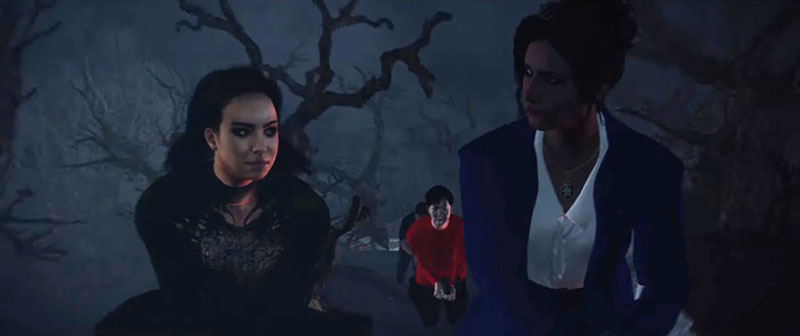
Camera Angles and Blueprints
On set, the production used the previs as a key reference for camera angles and coverage within the technical confines of the shoot. During post, it served as a blueprint and groundwork for Digital Domain’s VFX team, indicating how the plates were intended to be assembled. “Our work could also be used to minimise the extension work needed, and make sure that all the stunt work was achievable by the acting talent and wouldn’t require the use of digidoubles,” said Matt.
To plan and map out the complex Broom Chase, by matching their previs with the modularity of the physical set, they were able to place obstacles and establish a thematic through-line as needed, without losing the sense of the road as a real place. They successfully framed their shots so that the forest appeared to be endless without any definite goal in sight, yet without ever making the characters feel as though they were lost. Adhering to real world measurements and limitations allowed them to create an overall feeling of mystery and danger during the characters’ trials and tribulations in this sequence.
From Previs to Techvis
Matt said, “Never in my career has previs become more of a technical exercise than it did for this project, because every single frame of every single shot had to be captured practically on set. When the production planned to use a GripTrix – a small electric camera cart – for some dolly work, we not only had to ensure the characters were traversing at the speed their rig would allow but also that all the proposed action could be sufficiently captured by the cart in this fairly small space. That was just one of the technical hurdles required on this project. There were plenty more.”
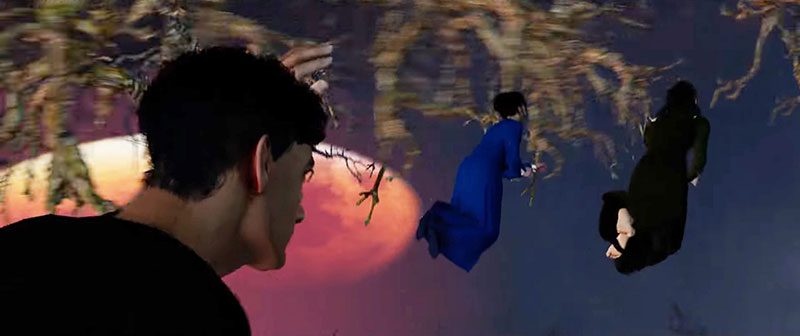
Reflecting on the production’s decision to work in a world of 2D magic, he commented that there isn’t much difference between creating previs for 3D and 2D effects. “I would just say that the more two dimensional something theoretically ends up being – whether in compositing or otherwise – the less informative the techvis tends to be,” he said. “All of our comp elements and cards are tailored to a specific camera location, just as they would be seen in a compositing workflow, and don’t really register in a world space.
“However, because production wanted as many effects done in-camera as possible, a considerable amount of rather fun problem solving was called for in order to achieve a desired effect while still conforming to the practical methodology of decades-old filming techniques. We really enjoyed working out the animal transformations, for instance, where we incorporated clever wipes or shadow gags to show them changing into witches. I’m not sure how much of those ideas ultimately came through, but they were fun to design all the same.”
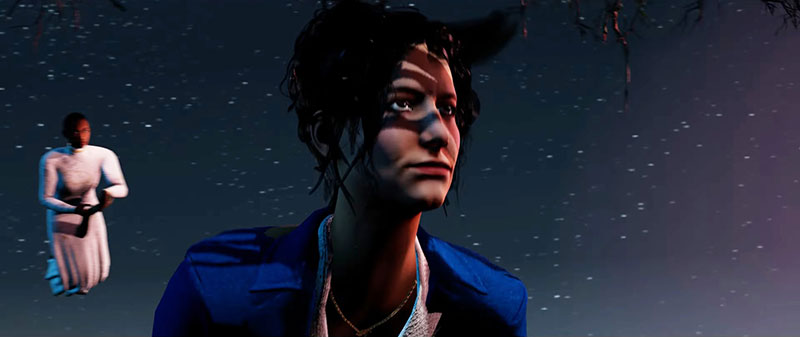
Past Life
In a dramatic scene in a morgue, we see Agatha pass through several transformations recalling her past life, from the time when viewers got to know her in ‘WandaVision’.
“This was originally going to be a far more elaborate sequence where we played her transformation through a series of reflection shots in mirrors,” said Matt. “The camera would essentially push through the reflection to reveal her in a different variation of herself, recognisable from her time at Westview in WandaVision. But once the appetite for digital trickery dwindled in production, we had to find far more practical ways to achieve the effect, and previs was instrumental in figuring out where those convenient cut points would be to allow for the transformations.”
Castle
In another scene, as Agatha and her helper Billy travel down the Road together, they come across a huge castle where they must enter and meet the next trial. Standing at a tarot table, they try to read the cards when swords begin to fall from the ceiling as the other witches join them. The ceiling begins to descend, and suddenly one of the cards causes the entire room to jolt and spin upside down, sending all the witches flying dangerously toward the swords.
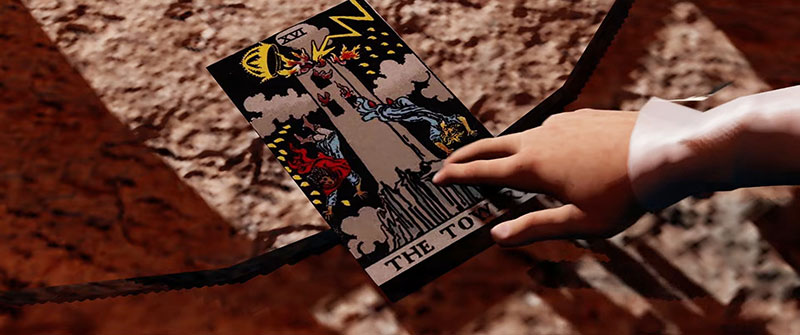
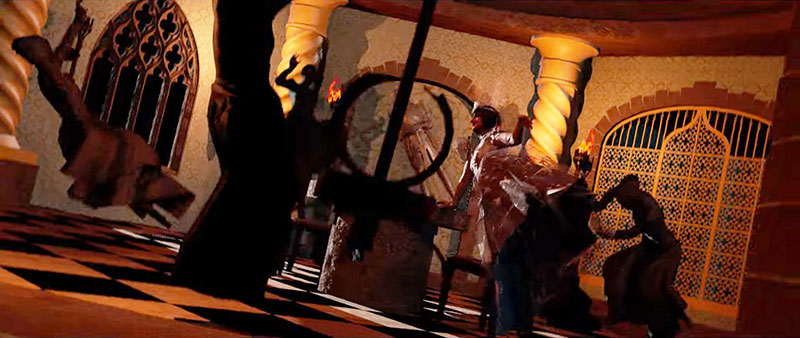
The detailed interaction between the sets and the characters made the storytelling aspect of the sequence fairly complicated. Matt said, “There was never going to be a rotating set. At the time, that would have been too resource consuming to construct. The idea was to shoot the action incredibly wide to allow for a post scale/roll of the footage at the turn, but have two sets built – one upright for the lead-up, the other inverted for the payoff action at the end.
Like the broom chase, quite a bit of techvis was needed to ensure this action was captured sufficiently to put the story across visually, but it all came together by the end. “As there would also be very limited CG to fall back on in post, our previs was more about helping instruct the shoot, and less about the VFX process later,” said Matt. “With a fairly locked story already in place, the more informative our previs was from a technical perspective, the more valuable it was. Our time was spent less in the ‘blue sky’ phase and more in the ‘execution’ phase.” digitaldomain.com


